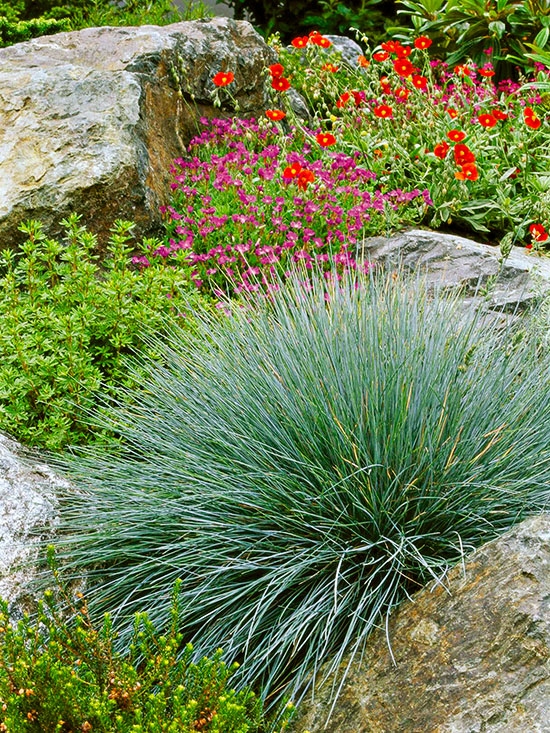






As gardeners have discovered the beautiful structure, admirable hardiness, and unique colors of ornamental grasses, these plants have jumped into the limelight. There are many options when it comes to ornamental grasses, but a few key points will help you choose and care for them. We break it down with this ornamental grass primer.
Ornamental Grass Plant Basics
Most grasses prefer a sunny, well-drained spot and are at least moderately drought tolerant. Spring is a good time to plant, but autumn is, too, and garden centers often stock lots of grasses in fall, so it's a good time to shop for them. In general, deer and other pests don't like them, so they are considered low-maintenance.
Ornamental Grass Types
Ornamental grasses are generally divided into two types: clump-forming and running. Clump-forming grasses stay fairly tidy and are easy to control. Running grasses are a different story: They generally should be planted using a bottomless pot in order to keep them from taking over. Ornamental grasses also may be dwarf and tightly mounded or more loose and open.
See our favorite ornamental grasses.
Uses for Ornamental Grass Plants
Grasses are fantastic plants for beds and borders. Their interesting texture contrasts nicely with other plants, and the movement they produce when the wind blows adds energy to every design. Grasses are also excellent container plants for the same reasons. Grow them in pots all season, then plant perennial types (which most of them are) in the ground in autumn.
The prime time for most ornamental grasses is autumn, when the seed heads mature. But don't cut them down after the first freeze. They will stay standing for many weeks yet, making them stars of the winter garden.
Ornamental Grass Maintenance
Once established, most ornamental grasses need little care. Average water and drainage is adequate for most types. Cut down the dead stalks in late winter or early spring.
Every three or four years, ornamental grasses should be divided, especially those that form a doughnut shape, with a dead center (such as maidengrass). This helps the plants stay healthy and vigorous and also allows you to spread around your favorite ornamental grasses. Use a spade to cut down through the grass clump and lift out a section that includes both shoots and roots. Plant the new portion, and fill the hole in the old spot with soil and compost.
Top Ornamental Grasses
Blue fescue (Festuca glauca): Blue fescue is a mound-forming ornamental grass that works well along edges or as a groundcover. Thrives in heat and sun, drought tolerant, must have excellent drainage. Hardy in Zones 4-8.
Reedgrass (Calamagrostis): This narrow, upright grass reaches 3-4 feet tall. It's an excellent companion in mixed borders. Zones 5-9.
Dwarf fountaingrass (Pennisetum alopecuroides): With fuzzy foxtail flower spikes, dwarf fountaingrass is a perennial favorite that reaches about 2–3 feet tall. Hardy in Zones 6-9.
Purple fountaingrass (Pennisetum setaceum): A staple of container gardens because of its purple foliage and seed heads, this grass is usually used as an annual; it's hardy only in Zones 9-10.
Prairie dropseed (Sporobolus heterolepis): A graceful, finely textured grass. It grows as a low, loose, open mound, making it a great edging plant, as well as a ground cover. Zones 3-9.
Switchgrass (Panicum virgatum): One of the most colorful and tough grasses in the garden, switchgrass comes in blue (Heavy Metal) and purplish varieties (such as Shenandoah), among others. Zones 5-9.
Japanese forestgrass (Hakonechloa macra aureola): This lovely chartreuse-striped grass is one of the few that thrives in shade. Zones 5-9.
Copyright © www.100flowers.win Botanic Garden All Rights Reserved